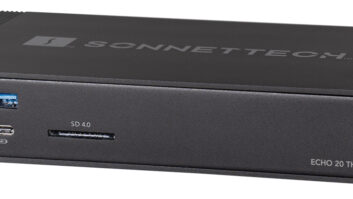According to the Harvard Business Review, national brands that have shifted marketing efforts from national to local campaigns have produced millions of dollars in new sales, with no net changes in total advertising budget. Yet today, audio-video integrators and manufacturers struggle to coordinate co-op advertising programs that leverage brand awareness in local markets.
The Power of Brands
Most custom integrators believe that equipment brand names have value among customers. Why? Because clients often come to dealers recommending specific equipment brands they want to purchase.
However, a strain in the relationship between dealers and manufactures has developed, often leaving dealers unsatisfied with vendors marketing directly to consumers. In addition, many integrators report that brands do not feed them enough leads.
When done correctly, co-op advertising can be a win-win for brands and their local retail channel partners. Brands get a boost in awareness and product visibility at the local level, while retail partners get a steady stream of leads with top-of-mind association with the brands that luxury consumers crave.
In the past, brand-marketing managers using traditional marketing channels for co-op have been frustrated that their messages were sometimes diluted or mishandled in local markets. With retailers trying their best to follow complicated rules to redeem co-op requests, it’s no wonder more than $1 billion of the $22 billion set aside by U.S. brands for co-op isn’t redeemed.
While co-op advertising has been a fixture in print and broadcast media for decades, it’s still relatively new to the world of online marketing. That’s especially surprising given that the internet gives brands total control of their messaging, along with precise data about which ads in which markets are working, so they can quickly and inexpensively switch out creative.
With nearly all audio-video consumers using the internet to research new installations and purchases, now is the time for brands and integrators to team up and “win” online.
A growing roster of forward-thinking AV brands have embraced cost-effective channel marketing programs to drive cohesive online messaging into local markets that deliver sales leads directly to their integrator partners.
In the give-and-take world of digital co-op marketing, here are four ways that local AV integrators and brands are working together to move merchandise and increase revenue.
1. Use Consistent Creative
One of the biggest challenges that large brands face when using local marketing platforms is keeping their messages consistent. For example, local retailers may attempt to create their own ad copy or design display banners and embed an old corporate logo or old product image.
Maintaining brand consistency at the local level starts with consistent creative. Many large brands provide approved ad templates that can be localized for local dealers. Some customized local ads can even include photos and local reviews (e.g., Named Best Place to Buy AV Equipment by Readers of Seattle Magazine).
By providing customized ad templates for each channel partner, the brand can ultimately save time and money through quicker approval turnaround and more control of its marketing messages.
For example, my company works with Bowers & Wilkins, JVC, Lutron, McIntosh, Integra, Paradigm, and many other AV brands to deliver turnkey internet creative that delivers qualified customers to local channel partners. Co-branded display ads and local search ads lead consumers to retailer and custom installer websites; ads appear in the target market when shoppers search on their mobile devices or watch relevant YouTube videos; and customized lead (landing) pages are automatically injected into retailer websites.
All the while, the brands maintain control over their multiple lines and products.
2. Understand User Motivation on Mobile Devices
Within the next six months, mobile internet use will surpass desktop access, and while local search accounts for 20 percent of queries on PCs, it’s 40 percent of all mobile queries.
Tech-savvy shoppers using smartphones are researching “on the go” and are in-market and ready to buy. PC users are still conducting research and reading reviews before making purchase decisions. The co-branded campaigns should consider these behaviors on different devices.
Mobile ads should not just be a reformatting or resizing of banner ads. Content on mobile ads should be optimized to leverage the way mobile users consume information. Less is more in terms of ad copy, and messaging should stay focused on a central call to action.
3. Leverage Online Features and Geography
Each online marketing channel has its unique strengths and weaknesses, both in terms of functionality and user preferences. Twitter users love links, while Facebook users respond well to photos. Pinterest and Instagram, by their very nature, are visual.
Brands can work with local partners to develop campaigns that tap into the preferred actions and responses within each social and research channel.
User demographics can also come into play. Women make up 58 percent of Facebook users, 70 percent of Pinterest users, and 62 percent of Twitter users. Men make up about 54 percent of Linked In and YouTube users and 64 percent of Google+ users.
Likewise, geography can play a big role. For mobile campaigns, targeting the user’s location can drive messaging on mobile devices such as, “We’re just around the corner,” or “Demo in-store today!” Plus, adding tweaks that highlight local involvement (“Congrats to Central High Football Team!”) can impact results.
4. Observe Ad Guidelines
Brands should set clear guidelines with local retailers and be clear about how much control local marketing managers have and what boundaries are set for modifications. They should share corporate messaging with the retailer but allow some leeway for customization and localization.
To facilitate review and approval, the brand’s marketing staff should utilize file-sharing tools and promise quick review, whether it’s a password-protected portal or specific email address designated for review of customized ads.
Following these steps, local AV companies and brands can both benefit from digital co-op, channel-marketing campaigns.

Brendan Morrissey is CEO of Netsertive.







